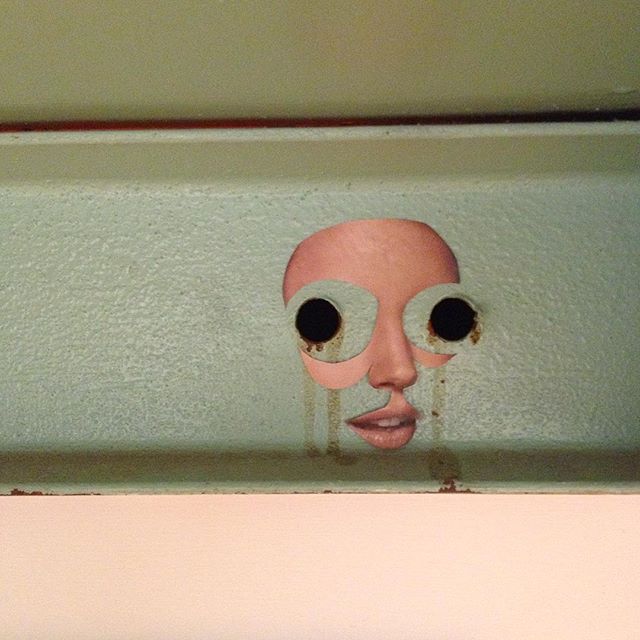The truth is often stranger than fiction. Appropriating and altering materials I create domestic scenes where nothing is as it seems. Appearing normal from afar, I use personal and found objects to communicate issues around mental illness, family, gender, and social taboos. Dining room chairs with objects embedded below the surface of their Saran wrapped cushions. Tea and coffee cups lie about, lipstick and coffee ring stained, with glass from the sidewalks of Boston’s Mission Hill neighborhood fired within. Under the stairs lies a pile of orange glitter, a broom, and a laundry basket filled with my own baby clothes. The labels that once read OshKosh B’gosh now read: white trash, slut, easy, crazy, and worthless. Catholic iconography is scattered throughout. The windowsill is flooded with frames of altered family photos and found images. The window against the wall glows with neon orange, the color of warning. The white lace JC Penney curtains are coffee stained and tied back with locks of blonde hair.
Through observations in the everyday, I find the bizarre and absurd in the familiar. Photographing, documenting and labeling out of place objects found in daily life. Playing with materials, I find interesting and odd juxtapositions, hiding and revealing a stream of contradictions. In the studio I make interventions through assemblage, drawing, and fibers. Sometimes I find a pairing right away, other times the materials of interest will sit with me for months before I find their mates. I connect with the Japanese ceramic method and philosophy Kintsukuroi, which repairs broken porcelain with gold. Rather than the something to disguise, the imperfections of an object are illuminated, adding to its allure and making it more beautiful for having been broken.
Through research, practice and experimentation I have looked at the work of Dadaists, such as Hannah Höch. Surrealists like Marcel Duchamp, Paul Klee, and Frida Kahlo. Contemporary artists and dark humorists like Wayne White, Wangechi Mutu, and Mike Kelley. Confessional artists such as Louise Bourgeois and Mary Kelley. I am drawn to literature, film, music, and comedy that tap into the relationships of attraction and repulsion, dark humor, and the surreal.
Surrounded by mental illness and social dysfunction, I subscribe to the truth that everyone creates and lives in their own reality. This work allows me to mindfully examine the self and what drives me as a caregiver. I do this work to understand life’s dualities: in order to fix something it must first be broken. I want the viewer to examine my work and their own surroundings with a sense of curiosity. What is the evidence we leave behind? What is normal?






















